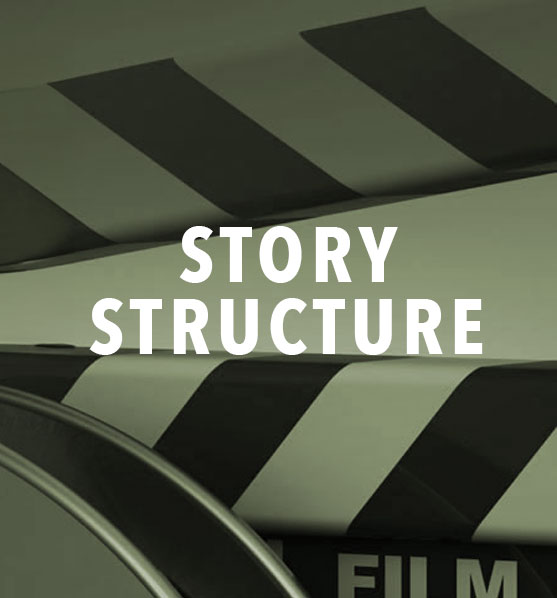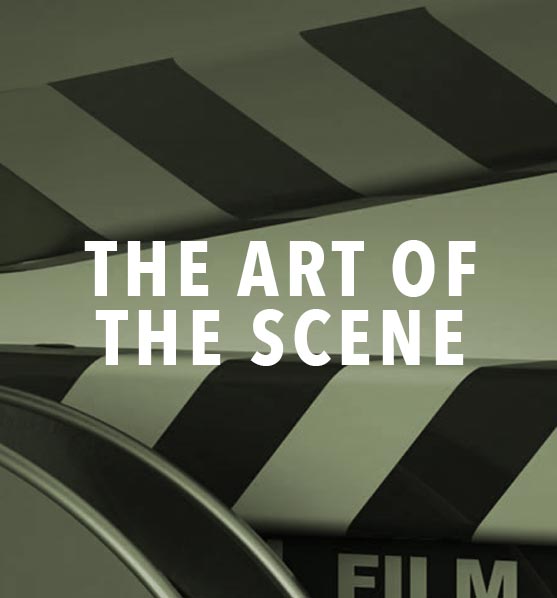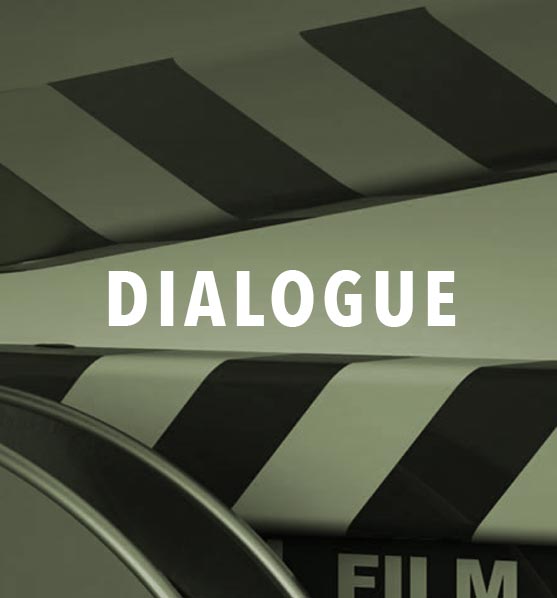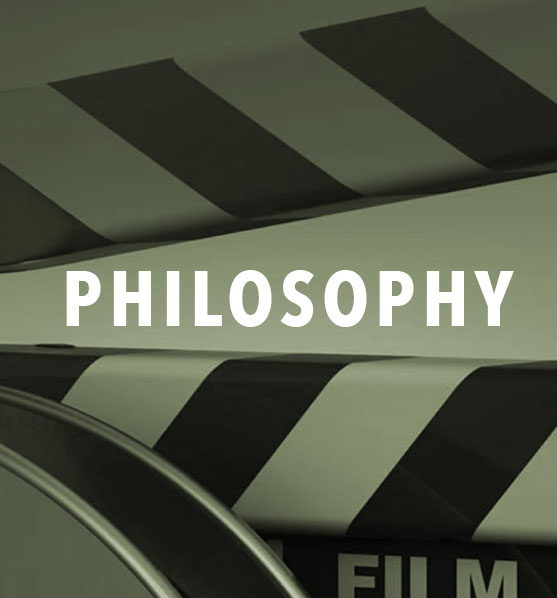QUICK SHEETS
Reference sheets from our round-table discussions
QUICK SHEETS
Reference sheets from our round-table discussions
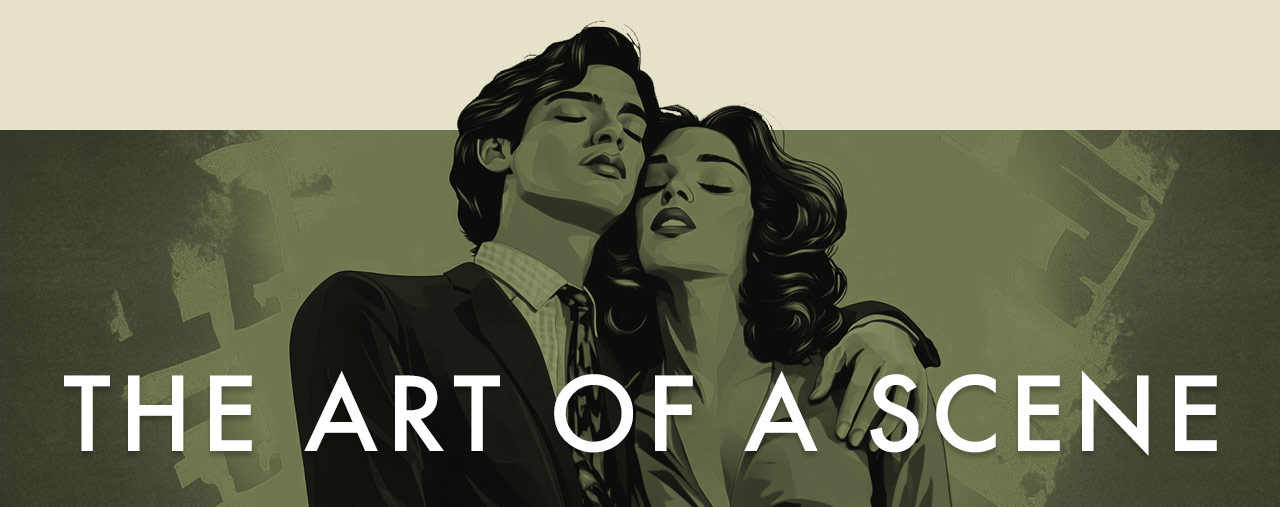
Screenwriting. The Art of a Scene tips.
The Hollywood Writers Group Quick Sheets are a free public resource to support screenwriters in their creative endeavors. We hope you find our Art of a Scene tips helpful, and wish you the best on your own unique journey.
Download a free copy of this quick sheet below.
“Here’s to the ones who dream, foolish as they may seem.”
Interested in updates to our quick sheets? Scroll to the bottom of this page.
New quick sheets are released every 2 weeks.
THE ART OF A SCENE
Table of Contents
The Key Elements of Scene-Building
Screenwriting. The Art of a Scene Tips.
The key elements of a successful scene in screenwriting are designed to ensure each moment meaningfully contributes to plot progression, character development, and emotional impact.
Here are the foundational elements every effective screenplay scene needs:
1. Scene Purpose & Objective
Clearly define the goal of your scene:
- Narrative purpose:
- Advance the plot
- Reveal crucial information
- Introduce or deepen character relationships
- Create or escalate conflict
- Reveal or expand on themes
Example:
In Parasite, the scene where the family infiltrates the wealthy home isn’t just entertaining—it reveals class tensions, character cunning, and escalates the narrative.
Ask yourself: “Why must this scene exist in my screenplay?”
2. Conflict
Every great scene involves some form of conflict or tension—either internal or external.
- External Conflict: Direct opposition between characters (arguments, physical danger, obstacles).
- Internal Conflict: Emotional or psychological tension within a character (guilt, doubt, moral dilemmas).
Conflict types:
- Character vs. Character (argument, negotiation)
- Character vs. Environment (struggle against a hostile world)
- Internal struggle (moral choice, emotional turmoil)
Example:
In Whiplash, Fletcher and Andrew’s interactions are full of escalating tension, driven by both external conflict (teacher/student) and internal conflict (Andrew’s obsession and anxiety).
3. Dialogue & Subtext
Strong dialogue drives scenes forward through character voice, subtext, and subtextual tension.
- Dialogue should reveal character motivation or advance the plot.
- Use subtext, where characters mean more than they explicitly say.
- Characters often mask intentions, which makes the dialogue layered and engaging.
Example:
The dinner-table argument in American Beauty is full of subtext: what characters don’t say directly reveals their frustrations clearly.
4. Clear Character Goals
Characters must have distinct goals and motivations in each scene:
- What does the character want?
- What’s their motivation behind their actions?
- What obstacles prevent them from achieving their objective?
Tip:
- Even minor characters need clear motivations—scenes feel flat if characters are just “there.”
Example:
In The Social Network opening scene, Mark wants Erica’s approval, while Erica wants respect. Their conflicting goals set up the entire story.
5. Setting & Atmosphere
Your scene’s environment should enhance tone, mood, and thematic meaning.
- Choose settings carefully to complement emotional impact:
- Is the environment oppressive, comforting, sterile, tense, hopeful?
- Details matter—small choices (weather, noise, decor, lighting) significantly impact the emotional resonance of the scene.
Example:
In Blade Runner 2049, the desolate, rainy cityscapes add melancholy and isolation, amplifying emotional resonance.
6. Turning Point (The Climax of the Scene)
The scene’s turning point is the critical moment of change or revelation.
- Characters face an important decision, uncover crucial information, or undergo a profound realization.
- This pivot must alter the narrative, the relationship dynamic, or emotional trajectory moving forward.
Example:
In Good Will Hunting, the iconic therapy session scene (“It’s not your fault”) changes Will’s perception of himself forever.
7. Emotional Impact (Stakes)
A powerful scene makes the audience feel something.
- Ensure the audience understands what’s at stake emotionally for the characters.
- The outcome of a scene should have emotional or narrative consequences.
- Ask yourself: “How does this scene affect the audience emotionally? Why should they care?”
8. Resolution (Outcome)
Every scene needs to end with clarity, showing the consequences of actions.
- Scenes should not end where they began. Something should always shift.
- Characters learn something new, make a decision, or realize they’ve failed or succeeded.
- Resolution creates anticipation for the next scene.
Example:
In Parasite, after the family hides under the table during a tense scene, they leave changed, realizing how precarious their position truly is.
Scene Structure Recap
A streamlined method to check if your scene has a complete arc:
- Set Up → Establish characters, setting, and goals clearly.
- Conflict Introduced → Characters pursue their objectives, facing obstacles.
- Escalation → Tension and stakes intensify.
- Climax – A pivotal moment changes things irreversibly.
- Resolution – Shows consequences clearly and sets up future scenes.
Additional Quick Tips
- Start scenes late, end them early.
Get in quickly, accomplish your goal, then exit before the audience gets bored. - Use visual storytelling:
Screenplays rely heavily on action, visuals, and subtle cues—not just dialogue. - Maintain subtextual dialogue.
Audiences appreciate nuance; avoid overly direct explanations. - Vary scene rhythms.
Mix action-oriented scenes with quieter moments to maintain pacing and dynamics.
Example: Scene Arc (Simplified)
|
Element |
Example (“The Social Network” opening scene) |
|
Goal/Setup |
Mark wants to impress Erica. |
|
Conflict |
Erica dislikes Mark’s arrogance and confronts him. |
|
Escalation |
Their conversation turns confrontational. |
|
Climax |
Erica breaks up with Mark. |
|
Resolution |
Mark is emotionally wounded, motivating his future decisions. |
Final Thoughts
Following these core elements ensures every scene adds meaningful depth, clear stakes, and emotional resonance, strengthening your screenplay.
Come in Late, Leave Early
Screenwriting. The Art of a Scene Tips.
In screenwriting, the phrase “come in late, leave early” refers to a technique designed to create tight, dynamic, and engaging scenes by starting just after the action or conversation has begun and ending before the natural conclusion.
The approach ensures your scene focuses only on its most essential, interesting moments.
“Come In Late” Explained
To “come in late” means skipping unnecessary setup and entering the scene at a compelling moment. Instead of beginning with characters entering, greeting, and making small talk, you start at or just before the point of action, conflict, or important revelation.
What this accomplishes:
- Eliminates exposition and keeps the pacing tight.
- Immediately engages the audience, creating curiosity and urgency.
- Increases tension and dramatic momentum—you don’t waste precious screen time.
Example of Coming in Late:
Instead of showing someone knocking, entering the room, sitting down, and then arguing, start right in the middle:
INT. OFFICE – DAY
JESSICA throws a file onto JOHN’s desk.
JESSICA: Explain this.
John stares at the file, shocked.
The audience immediately wants to know what’s happening, who these people are, and what’s inside the file.
“Leave Early” Explained
To “leave early” means ending the scene right after its dramatic purpose has been accomplished, often before the characters wrap up their interactions fully or settle into a new comfort zone.
Why leave early?
- Maintains story momentum and suspense.
- Avoids awkward, unnecessary dialogue or exposition.
- Keeps the audience engaged and eager for the next scene.
How to leave early effectively:
- End immediately after the turning point or emotional climax.
- Cut the scene on a strong visual, powerful line, or unanswered question.
- Leave something unresolved, prompting curiosity.
Example:
INT. RESTAURANT – NIGHT
MARCUS reveals his betrayal. AMANDA reacts, shocked.
AMANDA: You were working with them the whole time?
Marcus hesitates, unable to meet her eyes.
CUT TO:
Instead of resolving the tension fully, the scene ends on uncertainty, propelling viewers forward.
Practical Example of “Come In Late, Leave Early” Technique:
Weak Scene (too early, too long):
- A detective arrives at a house, knocks, waits, enters, and chats about small things before finally asking about a murder.
Better Version:
INT. APARTMENT – DAY
Detective LINDSAY paces, furious. Across the room, SUSAN nervously pours coffee.
LINDSAY: Stop stalling. Where’s your husband?
Susan drops the coffee cup, shattering glass everywhere.
In this second version, the scene opens right at a tense, revealing moment and would ideally end without fully resolving the confrontation, leaving the audience intrigued.
Final thoughts: Benefits of “Come In Late, Leave Early”:
- Maintains pacing – no dead space.
- Strengthens narrative tension – viewers stay engaged.
- Sharpens dialogue – forces characters to speak purposefully.
- Builds anticipation – audience eager to find out what happens next.
Quick Scene Writing Checklist (Come Late/Leave Early):
Start in motion: Avoid unnecessary entry dialogue or description.
Quickly establish stakes/conflict: Clearly define the scene’s tension early.
Climax swiftly: Reach the emotional or dramatic turning point promptly.
Exit promptly: Cut as soon as a decision or key reveal occurs.
Bottom Line.
To “come in late and leave early” is to trim away unnecessary beginnings and endings in your scenes, creating a screenplay that is lean, purposeful, engaging, and professionally polished.
What is the Arc of a Scene?
Screenwriting. The Art of a Scene Tips.
The arc of a scene in creative screenwriting is a concise structure that provides clarity, momentum, and emotional impact. A scene arc ensures every scene advances the story effectively, keeping your audience engaged from beginning to end.
Here’s a clear breakdown of the ideal scene arc in screenplay writing:
The Scene Arc Structure
A strong scene generally follows this four-part arc:
- Setup (Beginning)
- Rising Tension (Middle)
- Climax / Turning Point
- Resolution / Outcome (Ending)
1. Setup (Beginning)
The setup quickly establishes:
- Where and when the scene takes place (time and place).
- Who is involved (main characters).
- What the characters want (scene objectives/goals).
- The emotional tone or context.
Example:
In The Social Network, the opening scene clearly sets up Mark Zuckerberg’s personality, Erica’s expectations, and the tension between ambition and insecurity.
Purpose of setup:
- Clearly define what characters want and what’s at stake.
- Ground your audience in the world or the moment.
2. Rising Tension (Middle)
This is the heart of the scene: the characters face conflict, obstacles, or unexpected shifts that escalate tension.
- Conflict could be emotional, physical, or internal (a disagreement, secret revelation, external threat, etc.).
- Each exchange should increase stakes or tension incrementally.
- Characters should actively try to get what they want, facing obstacles or resistance.
Example:
In the interrogation scene from The Dark Knight, Batman pushes Joker for information, and the tension continuously escalates, leading to emotional and physical intensity.
Purpose of rising tension:
- Engage viewers emotionally.
- Make the audience feel the scene is moving toward something significant.
3. Climax / Turning Point (Scene Pivot)
This is the crucial moment the scene builds toward—a dramatic shift, where tension peaks, a revelation occurs, or a decision is made:
- The protagonist either succeeds, fails, or faces a pivotal decision.
- It often involves emotional or physical action (a confession, a fight, a kiss, a discovery).
- Changes the direction or meaning of the scene irreversibly.
Example:
In Good Will Hunting, the climax of the park bench scene is when Robin Williams’ character calls out Will’s emotional immaturity. The scene shifts completely.
Purpose of the climax:
- Create meaningful change.
- Clearly signal a turning point.
4. Resolution (End / Outcome)
The scene concludes, clearly changed by what just happened. This resolution sets up what comes next:
- The characters react, reassess, or acknowledge the outcome of the climax.
- There is no return to the initial status quo.
- Often leaves the audience anticipating or questioning what happens next.
Example:
In No Country for Old Men, the coin-toss scene resolves with a chilling yet calm shift in power—clarifying how deadly Anton Chigurh truly is and heightening tension for the story ahead.
Purpose of resolution:
- Ensure clarity in consequences.
- Sets up anticipation for future events or scenes.
A Quick Scene Checklist:
To ensure your scene follows a strong arc, answer these questions clearly:
- What does the character want in this scene? (Clear goal)
- What’s stopping them from getting it? (Obstacle/Conflict)
- How does the tension escalate? (Increasing stakes)
- What’s the turning point of the scene? (Climax)
- How do characters change or what has changed by the end? (Resolution)
Tips for Writing Strong Scene Arcs:
- Show conflict quickly. Good scenes dive into tension early.
- Maintain character motivation clearly. Scenes lose power if characters lack clear intentions.
- Use subtext. Let characters’ actions reveal their feelings.
- Make consequences clear. Audiences should see clearly how scenes matter.
Example: Simplified Scene Arc Analysis
Film: Whiplash (2014) — “Not My Tempo” Scene
- Setup: Andrew practices drums nervously; Fletcher enters the room—establishing tension immediately. Andrew wants approval.
- Rising Tension: Fletcher repeatedly stops the performance, increasing frustration and humiliation.
- Climax: Fletcher throws a chair at Andrew, clearly revealing his ruthlessness.
- Resolution: Andrew realizes how brutal Fletcher is, fundamentally changing their relationship.
Why the Scene Arc Matters:
The scene arc ensures every scene is purposeful, engaging, and moves the story forward. Following this structure provides your screenplay with momentum and ensures every scene feels essential.
Audience Engagement
Screenwriting. The Art of a Scene Tips.
Keeping an audience engaged while reading a screenplay scene means crafting moments that are dynamic, purposeful, and emotionally resonant. A compelling scene maintains reader attention by using clear objectives, meaningful conflict, tension, and emotional stakes, all communicated through tight, vivid writing.
Here’s how you can ensure your audience stays fully engaged in every scene:
1. Begin with Immediate Tension (“Start Late”)
Open the scene as close to the critical moment as possible, dropping your reader directly into conflict or action:
- Skip mundane entrances, greetings, or setups.
- Present a compelling problem or intriguing question right away.
Example (Weak):
Two people greet each other and exchange small talk before the argument begins.
Better:
She slaps the envelope onto the table.
“Tell me you didn’t sign this.”
2. Clarify Immediate Stakes
Make sure your reader immediately understands what’s at stake emotionally or physically:
- What’s the character risking?
- Why should the audience care?
Example:
“If you sign that paper, you’ll never see your daughter again.”
3. Use Subtext and Subtlety
Characters shouldn’t state exactly how they feel. Keep dialogue loaded with subtext, mystery, or hidden agendas to intrigue the audience:
- Say less; imply more.
- Characters often hide their true intentions.
Example:
“You always did know how to make me feel welcome,” she says sarcastically, eyeing the door.
4. Ensure the Scene Escalates
Every exchange should raise tension or stakes incrementally:
- Arguments intensify.
- Secrets emerge.
- Pressure builds until something must give.
Example:
- Dialogue moves from polite to argumentative, from argument to confrontation, climaxing in an emotional outburst.
5. Use Subtext and Implication
Let the audience interpret events through subtext rather than exposition:
- Characters don’t say what they feel directly.
- Visual details convey meaning (a clenched fist, broken photo, silence).
Example:
She looks away.
He tries to touch her hand. She pulls away without looking up.
6. Reveal Character Through Action
Actions define characters clearly:
- Show character traits via subtle physical choices rather than exposition.
- Let characters express themselves through active decisions, movements, and responses.
Example:
- Someone brave acts decisively under pressure.
- A cowardly character avoids eye contact, stammers, or hesitates.
7. Deliver a Strong Turning Point
Every engaging scene has a clear turning point, changing the situation or the character’s understanding significantly:
- A sudden reveal.
- A critical decision.
- A betrayal or reconciliation.
Example:
JOHN
(Quietly)
It wasn’t them. It was me.
8. Leave the Scene with a Question or Momentum (“Leave Early”)
Exit before everything is neatly resolved:
- End with suspense, surprise, or uncertainty.
- Make the audience eager to see what happens next.
Example:
“I’ll give you until midnight to decide,” she says, walking away, leaving him frozen, unsure what to do next.
9. Maintain Consistent Tone and Pace
Your scene’s pacing should match the tension you’re building:
- Shorter sentences quicken pace.
- Longer sentences slow down the reader to build dread or suspense.
- Match pacing to the mood of the scene (fast, action-packed vs. slow, suspenseful).
10. Use Powerful, Visual Descriptions
Keep your writing visual, concise, and vivid:
- Create images readers can see clearly in their minds.
- Every word should reinforce the scene’s purpose and mood.
Example:
Rain pounds the rooftop, drowning out the muffled screams.
11. Keep Dialogue Snappy, Layered, and Realistic
Great dialogue feels authentic yet focused, with subtext that reveals deeper layers:
- Avoid lengthy speeches unless absolutely necessary.
- Characters rarely say exactly what they mean.
Example:
“Nice tie,” he says, his voice dripping with disdain.
12. Add Visual and Emotional Subtext
Use visual descriptions, settings, and small details to enhance emotional depth subtly:
- Background objects hinting at character secrets.
- Non-verbal reactions (a glance, hesitation, silence) tell deeper stories.
13. End Scenes on Momentum (“Leave Early”)
End scenes before the audience can relax:
- Leave a cliffhanger, unanswered question, or a subtle emotional shift.
- Keep the reader turning the page to see what happens next.
Quick Scene Engagement Checklist
- Immediate conflict or tension?
- Clear stakes from the start?
- Characters have clear, conflicting goals?
- Dialogue has layers/subtext?
- Scene escalates logically?
- Ends with momentum, not a resolution?
- Reveals character through action, not just dialogue?
Example Scene Opening (Engaging):
Instead of this slow start:
INT. HOUSE – NIGHT
JAMES enters, walks through a dark hallway, looks around, and sees something disturbing at the end of the hallway.
Try:
INT. HOUSE – NIGHT
JAMES freezes in the hallway. A shadow moves at the far end—someone else is here.
He reaches slowly for his pistol, breathing shallow.
Then a soft voice whispers from the dark:
VOICE (O.S.): You shouldn’t have come back.
Final Thoughts
Applying these strategies will ensure your screenplay stays sharp, dynamic, emotionally impactful, and deeply engaging. “Come in late, leave early,” maintain clear stakes, and let tension drive your narrative forward.
Action/Reaction
Screenwriting. The Art of a Scene Tips.
In screenwriting, understanding the distinction between action-driven (active) and reaction-driven scenes is crucial for shaping compelling narratives. Each type serves specific storytelling functions, balancing pace, tension, and emotional depth.
Here’s how each works clearly and practically:
1. Action Scenes (“Scenes of Doing”)
Action scenes (or scenes of doing) involve characters actively pursuing goals, facing obstacles, and taking concrete actions. They propel the plot forward dynamically.
Elements of Action Scenes:
- Characters have clear objectives.
- They take deliberate steps or confrontations toward their goal.
- High external tension, urgency, and stakes.
- Conflict often physical or immediate (chases, confrontations, interrogations).
Common action scenes include:
- Fights or chases
- Arguments or confrontations
- Investigations or interrogations
- Pursuits of clear goals (escaping danger, obtaining an object, confronting someone)
Action Scene Checklist:
- Clear character goal
- Clear opposition or obstacles
- Clear stakes (why it matters)
- Turning point or climax
- Change to character situation by the end
Example (Action Scene):
- In Raiders of the Lost Ark, Indiana Jones escaping the rolling boulder clearly exemplifies high-stakes action scenes.
2. Reaction Scenes (“Scenes of Processing”)
Reaction scenes focus on characters processing, reacting, or emotionally responding to previous events. They allow the audience insight into the character’s internal world, emphasizing character growth, decisions, or reflection.
Reaction scenes typically include moments such as:
- Emotional aftermath (characters discussing recent events)
- Internal conflict or struggle
- Strategic decisions or regrouping
- Reflection, planning, or assessing consequences
These scenes may not immediately propel the plot, but they deepen emotional and thematic resonance.
Reaction Scene Checklist:
- Clear emotional reaction or reflection
- Character introspection or realization
- Changes in relationships, emotions, or goals
- Subtle, meaningful character decisions
Examples
|
Type of Scene |
Example |
|
Action Scene |
Inception — The hallway fight: characters fighting through dream environments to complete their mission. |
|
Reaction Scene |
Manchester by the Sea — After discovering his brother has died, Lee quietly processes grief, deciding his next move alone, without dialogue. |
When to Use Each Type
|
Scene Type |
Use to: |
Audience Impact |
|
Action Scenes |
Propel story forward quickly |
Engagement, excitement, suspense |
|
Reaction Scenes |
Provide emotional depth & reflection |
Empathy, intimacy, emotional connection |
Ideally, you’ll alternate these scenes for effective pacing and emotional rhythm—action creates momentum, reaction deepens emotional investment.
Balancing Action and Reaction: A Brief Guide
Think of a screenplay as a rhythm:
- Action scene: Something significant happens.
- Reaction Scene: Characters respond emotionally or psychologically.
- This reaction influences the next action scene—creating an ongoing cycle of action and reflection, pushing the story forward naturally.
Simple example:
- Action Scene: Character faces a devastating breakup (active conflict).
- Reaction Scene: Character emotionally processes this loss, coming to an important decision about life.
- Next Action Scene: Character quits job, moves abroad, and pursues a new dream.
Tips for Using Action & Reaction Scenes Effectively
- Vary pacing: Mix high-intensity scenes with quieter emotional moments.
- Always clarify scene intention: What’s the emotional or narrative purpose?
- Don’t underestimate quiet moments: Reaction scenes can hold immense power.
- Avoid overly long reaction scenes: Keep reflective moments clear, concise, and purposeful.
Quick Reference – Scene Goals
|
Action Scene |
Reaction Scene |
|
Characters pursue goals actively |
Characters emotionally reflect |
|
Clear external obstacles |
Internal struggles & realizations |
|
High energy, external tension |
Low energy, internal tension |
|
Immediate plot momentum |
Emotional depth & clarity |
Why it Matters
The balance between action and reaction scenes gives your screenplay rhythm, emotional depth, and forward momentum. Audiences remain engaged because there’s always movement—either external action or internal development.
Examples: Great Scenes from Great Films
Screenwriting. The Art of a Scene Tips.
Here’s a curated list of films renowned for excellent scene building, each recognized for their strong, deliberate, and impactful scene structures. They span diverse genres but share clarity of purpose, rising tension, vivid character motivations, precise pacing, and memorable turning points.
Drama & Character-Driven Films
These films excel in building scenes that profoundly reveal characters and conflicts through nuanced dialogue and subtle action:
- Whiplash (2014)
- Scene example: “Not my tempo”—The tension builds brilliantly through dialogue and power shifts.
- The Social Network (2010)
- Scene example: Opening breakup scene—rapid-fire dialogue filled with subtext immediately draws viewers in.
- Parasite (2019)
- Scene example: The family hiding under the coffee table—perfect tension building and social commentary layered with visual storytelling.
- Manchester by the Sea (2016)
- Scene example: The emotional climax (“It’s not your fault”) delivers powerful character insight through careful pacing.
Thriller & Suspense Films
These films use escalating tension, pacing, and reveals masterfully:
- No Country for Old Men (2007)
- Scene example: “Coin toss” at the gas station—perfect subtext, tension, and character revelation.
- Sicario (2015)
- Scene example: Border crossing scene builds suspense visually and emotionally, without exposition.
- Se7en (1995)
- Scene example: “What’s in the box?” A simple setup, powerful suspense, and explosive emotional payoff.
Crime & Noir Films
These films use intense dialogue and careful staging to build memorable scenes:
- Heat (1995)
- Scene example: The diner scene between Al Pacino and Robert De Niro—subtext, dialogue-driven tension, powerful character revelations.
- Pulp Fiction (1994)
- Scene example: Opening diner robbery—sharp dialogue, tension building, character insights delivered succinctly.
- The Godfather (1972)
- Scene example: Michael Corleone’s first kill in the restaurant—perfect buildup of tension through dialogue, gestures, and subtext.
Sci-Fi & Fantasy Films
These films create scenes that build immersive worlds through conflict, visuals, and storytelling economy:
- Blade Runner 2049 (2017)
- Scene example: Opening sequence with Officer K—perfectly reveals the world’s tone, protagonist’s inner conflict, and story stakes.
- Inception (2010)
- Scene example: Hotel hallway fight—visually innovative, carefully structured tension, clear stakes.
Dramas & Character-Driven Films
Films excelling at quiet yet powerful scenes that build character depth:
- Marriage Story (2019)
- Scene example: Apartment fight scene between Adam Driver and Scarlett Johansson—conflict, escalation, powerful climax.
- Parasite (2019)
- Scene example: The “family hiding under the table” sequence, brilliantly building tension visually and emotionally.
Historical Films
These films construct powerful scenes deeply rooted in historical authenticity and character interactions:
- Inglourious Basterds (2009)
- Scene example: Opening farmhouse interrogation scene—tension escalates subtly yet dramatically.
- There Will Be Blood (2007)
- Scene example: Daniel Plainview’s “I drink your milkshake” climax—perfect escalation of tension, character reveals, and thematic depth.
Dialogue-Driven Drama
Films that utilize intense, layered dialogue scenes:
- Good Will Hunting (1997)
- Scene example: Therapy session scene between Robin Williams and Matt Damon—character transformation achieved through careful dialogue.
- 12 Angry Men (1957)
- Scene example: Jurors deliberate guilt or innocence—tension built entirely through conversation, revealing character and conflict.
Key Takeaways from These Films for Your Own Scene-Building:
- Tension & Conflict:
Every interaction serves a purpose. Every scene has clear stakes. - Purposeful Dialogue:
Dialogue is engaging, meaningful, and layered with subtext. - Visual Storytelling:
Scenes reveal meaning through visuals and actions, not just dialogue. - Climax & Turning Points:
Scenes reach clear, impactful turning points. - Clear Emotional Stakes:
Audiences emotionally connect to scenes because they understand what’s at risk.
Examples: Scenes that Just Don’t Work
Screenwriting. The Art of a Scene Tips.
Here are examples of films often cited as having poor, amateurish, or ineffective scene-building. Typically, these films suffer from unclear objectives, weak dialogue, inconsistent pacing, or unclear conflict and stakes, which undermine audience engagement:
Examples of Films with Poor Scene-Building:
- “The Room” (2003) – directed by Tommy Wiseau
Why scenes fail:
- Poor dialogue with unnatural, repetitive lines.
- Scenes start too early (characters entering rooms unnecessarily).
- Conversations are repetitive and don’t move plot or character forward.
- No clear escalation of tension or purposeful resolution.
Example:
The rooftop scene (“Oh hi, Mark”) is famous for awkward timing, stilted dialogue, and unclear motivations.
2. Birdemic: Shock and Terror (2010)
Why scenes fail:
- Long, aimless scenes without clear purpose or tension.
- Characters often deliver flat dialogue without conflict or motivation.
- Awkward transitions and random action that does not progress the story logically.
Example:
The random bird attacks without build-up, logical consequences, or emotional stakes.
3. The Room (2003) (Tommy Wiseau)
Why scenes fail:
- Poorly structured, random scenes lacking clear objectives.
- Excessive exposition and irrelevant subplots.
- Scenes often end without emotional or narrative progression.
Example:
A coffee shop scene between Tommy and a florist has dialogue that’s awkward, unmotivated, and repetitive, offering no clear narrative or character value.
4. Birdemic: Shock and Terror (2010) (James Nguyen)
Why scenes fail:
- Flat dialogue and unnatural performances.
- Scenes drag without tension or clear narrative purpose.
- Illogical transitions and actions create confusion rather than engagement.
Example:
Prolonged driving sequences without narrative tension, relevance, or forward movement.
5. Cats (2019)
Why scenes fail:
- Weak storytelling: scenes unfold without clear dramatic tension or direction.
- Unclear character objectives, motivations, or emotional arcs within scenes.
- Too much reliance on exposition and awkward musical sequences.
Example:
The infamous “Jellicle Cats” introductory sequence leaves audiences confused about stakes or character goals.
6. Batman & Robin (1997) (Joel Schumacher)
Why scenes fail:
- Awkward dialogue filled with exposition and forced jokes.
- Scenes lack clear emotional or narrative stakes.
- Excessively campy visuals and tone undercut emotional engagement.
Example:
The scene with Mr. Freeze and his constant ice-themed puns (“Ice to meet you!”) diminishes tension or meaningful character interaction.
7. Gigli (2003) (Martin Brest)
Why scenes fail:
- Dialogue-heavy scenes with unnatural exchanges.
- Scenes often wander without clear purpose or emotional stakes.
- Flat pacing makes audience lose interest.
Example:
Extended conversations between main characters that neither advance the story nor deepen relationships meaningfully.
8. Suicide Squad (2016) (David Ayer)
Why scenes fail:
- Scene structure suffered due to overly chaotic editing.
- Scenes feel disconnected and unearned, lacking clear arcs.
- Character motivations remain unclear, limiting emotional engagement.
Example:
Introductions to characters felt rushed, unclear, and lacked coherent build-up.
Common Amateurish Scene-Building Mistakes in These Films:
- Lack of clear stakes or tension: Scenes fail to establish what’s at risk.
- Unrealistic or forced dialogue: Characters speak unnaturally or without believable motivation.
- Poor pacing: Scenes drag or rush without logical rhythm.
- Lack of visual storytelling: Overly reliant on exposition or flat actions.
- Random scenes without purpose: Scenes don’t move plot or character forward, causing confusion or boredom.
How to Avoid Amateurish Scene-Building:
Begin scenes late: Skip unnecessary setup; get to the conflict quickly.
End scenes early: Finish the scene after the emotional climax; don’t linger.
Maintain clear objectives: Know exactly what each scene achieves narratively or emotionally.
Use dialogue purposefully: Dialogue should reveal character, advance story, and build tension organically.
Show, don’t tell: Convey information visually and through actions rather than exposition-heavy dialogue.

